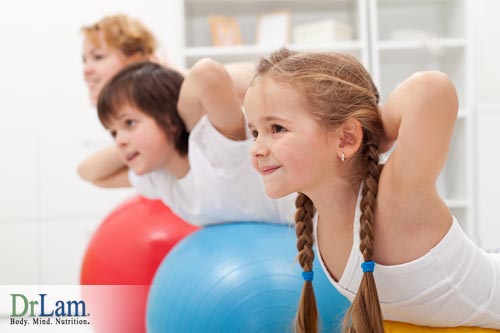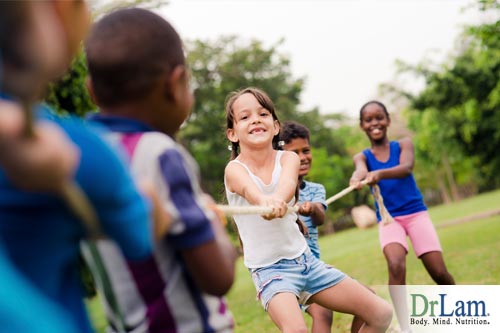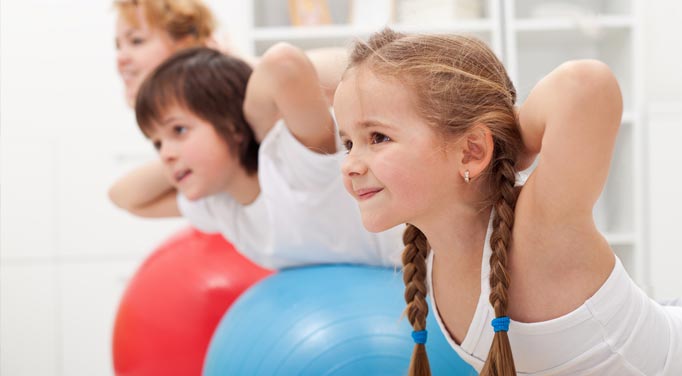 Today's lifestyles are putting children’s bodies under tremendous amounts of stress and pressure. They’re left with precious little time for playing or stress relief exercises. As a result, they’re not only left struggling to keep up but their bodies are also being impacted in very grievous ways.
Today's lifestyles are putting children’s bodies under tremendous amounts of stress and pressure. They’re left with precious little time for playing or stress relief exercises. As a result, they’re not only left struggling to keep up but their bodies are also being impacted in very grievous ways.
Children that are physically active are often in happier moods and have less depression symptoms than less active children. Some researchers report that one of the reasons is that exercise appears to help the children deal with stress.
Finnish researchers conducted a study with 258 eight-year-old girls and boys. These children were required to wear an accelerometer on their wrist for 4 days to register the quantity and quality of the child’s physical activity. Throughout the day, parents swabbed the inside of the child’s mouth to get samples of the saliva. This enabled researchers to assess their cortisol levels. Cortisol is a hormone that is usually induced by mental or physical stress. It is produced by the adrenal glands. The adrenal glands are only part of the larger NeuroEndoMetabolic (NEM) Stress ResponseSM system in your body which is working around the clock to maintain your well-being. When it is overworked, it secretes copious amounts of cortisol to cope. However, as stress becomes more persistent, the glands are unable to keep up.
The cortisol levels were the same in more active and less active children. The researchers then gave each child a standard psychosocial child stress test that involved storytelling challenges and arithmetic. Researchers found that the children that were less physically active had raised cortisol levels after the stress test. The children that were moderately or vigorously physically active did not have a rise in the level of cortisol. This is because stress relief exercises increase your threshold for stress management, meaning that cortisol or other hormones will not be immediately released after experiencing stress.
The researchers stated in The Journal of Clinical Endocrinology Metabolism that the results from this study indicate positive physiological responses to stress in physically active children. The children that had the least physical activity showed the highest cortisol levels.
The assistant professor of kinesiology, Disa Hatfield, said “This study shows that children who are more active throughout their day have a better hormonal response to an acute stressful situation.”
Regularly partaking in stress relief exercises becomes imperative for avoiding Adrenal Fatigue Syndrome (AFS). Exercise strengthens your metabolism's ability to quickly detoxify and therefore alleviate stress. For children, this means freeing up more time for physical activity and making it a regular part of their daily lives. Instead of letting children relax via sedentary activities, they should be encouraged to take part in sports and other physically demanding activities. Exercise is important for aiding the body in recovering from stress. By doing so, the body can reverse or avoid adrenal exhaustion. One important caveat is that children tend to over-exercise without realizing it. Because the body tends to be rather resilient, symptoms of AFS tend to be hidden. One has to look at other indicators , such as increased food sensitivities, frequent infections, poor sleep pattern as clues of underlying adrenal function.
 Dr. Hatfield also noted that this study did not have a control for sugar intake. Sugar has also been associated with a rise in cortisol levels. Sugar is commonly found in caffeinated beverages which can hyper-stimulate the body. Additionally, the Finnish researchers commented that the accelerometers worn by the children were not able to measure some activities accurately such as swimming or bicycling.
Dr. Hatfield also noted that this study did not have a control for sugar intake. Sugar has also been associated with a rise in cortisol levels. Sugar is commonly found in caffeinated beverages which can hyper-stimulate the body. Additionally, the Finnish researchers commented that the accelerometers worn by the children were not able to measure some activities accurately such as swimming or bicycling.
A University of South Dakota professor of pediatrics and executive director of the National Youth Sports Health and Safety Institute, Michael F. Bergeron, cautioned readers that cortisol levels might actually better measure a child’s propensity to overall stress instead of a measurement for a single day.
A professor of exercise science at the University of South Carolina, Russell R. Pate, states that even though elementary schools have been generally supportive of children’s physical education, a mere 29% of high school students meet the 60 minute national guideline.
Dr. Hartfield states that children that are more physically active respond better to stressors including social challenges and tests. She said the study appears to indicate it is a physiological reason but it might be because the hormonal response.

